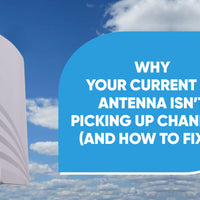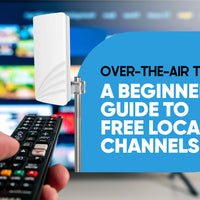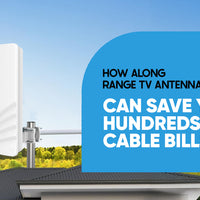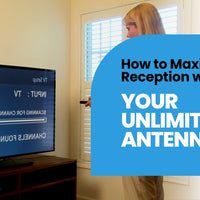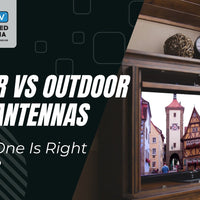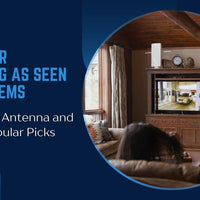Summary
- A long-range antenna can typically reach up to 100 miles, but actual performance varies by location and terrain.
- Key variables include antenna type, broadcast tower proximity, and environmental obstructions.
- Outdoor antennas generally outperform indoor ones in both range and consistency.
- Certain atmospheric events may temporarily boost signal reach far beyond typical limits.
- Users can enhance antenna performance with proper placement, height, and equipment upgrades.
In an era of rising cable bills and fragmented streaming services, long-range TV antennas have become a cost-effective solution for accessing live television. Whether for permanent home use or portable applications such as RVs and camping, these antennas promise high-definition entertainment without monthly fees. However, one of the most common questions is: how far can a long-range TV antenna really reach?
While many antenna models, such as Unlimited Antenna, advertise ranges up to 100 miles, real-world performance often depends on environmental and technical conditions. This article explores the actual capabilities of long-range antennas, clarifies common misconceptions, and offers tips to optimize reception.
Key Factors That Determine Antenna Range
Understanding antenna range begins with an analysis of the factors that influence signal strength and consistency. Each of the following components plays a critical role in determining how many channels a user can realistically receive.
Location
Geographic location significantly affects signal strength. The closer an antenna is to a broadcast tower, the stronger and more stable the signal tends to be. Conversely, urban environments may present additional challenges due to signal interference from buildings, while rural areas may benefit from fewer obstructions but greater distances from towers.
Terrain
Natural and artificial structures can either obstruct or allow clear signal transmission. For instance, flat terrain often supports stronger reception, while mountainous regions, forests, and tall buildings may reduce signal clarity.
Antenna Type
Different antenna types are designed for varying ranges. Indoor antennas generally function well within a 30 to 45-mile radius, suitable for urban and suburban environments. Outdoor antennas, such as Unlimited Antenna, are more robust and can reach distances of 70 to 100 miles under ideal conditions. Their design often includes features like weather resistance and multi-directional reception to optimize usability.
Antenna Power
The power of the antenna also influences its performance. Higher-powered antennas or those with built-in amplification can enhance reception in weak-signal areas. However, amplification alone does not resolve issues caused by physical obstructions.
Earth's Curvature
Due to the curvature of the Earth, most terrestrial broadcast signals begin to weaken around the 70-mile mark. Although certain antennas claim 100-mile capabilities, signals beyond this range usually rely on rare atmospheric conditions or elevated positioning.
Ideal Conditions for Maximum Range
When placed in the right setting, a long-range antenna can operate at peak efficiency. The following elements support optimal signal acquisition:
- Flat, unobstructed landscapes with minimal hills or vegetation
- High-powered, elevated broadcast towers that transmit over wider areas
- Clear line of sight between the antenna and the tower without interference
These conditions create an environment where long-range antennas like Unlimited Antenna can truly reach their advertised capabilities.
Realistic Expectations for Long-Range Antennas
While marketing claims can be impressive, it’s essential to set expectations based on antenna type and local conditions.
Indoor Antennas
- Best for use within 30 to 45 miles of broadcast towers
- Suitable for apartments or areas with minimal obstruction
- Performance may vary due to wall material, appliances, or nearby interference
Outdoor Antennas
- Effective for distances of 70 to 100 miles
- More resistant to weather and better suited for permanent installation
- Models like Unlimited Antenna include DVR functionality and weather resistance for enhanced usability
Beyond 100 Miles
Reception beyond this range is uncommon and typically depends on:
- Unusually elevated placement
- Rare weather events
- Lack of obstructions in remote areas
Conclusion
A long-range TV antenna can indeed offer exceptional access to free, over-the-air content when used correctly. While models like Unlimited Antenna support up to a 100-mile range, factors such as location, terrain, and antenna placement play a significant role in actual performance. By understanding and adjusting for these variables, users can significantly enhance their TV viewing experience without relying on cable or internet-based streaming services.


